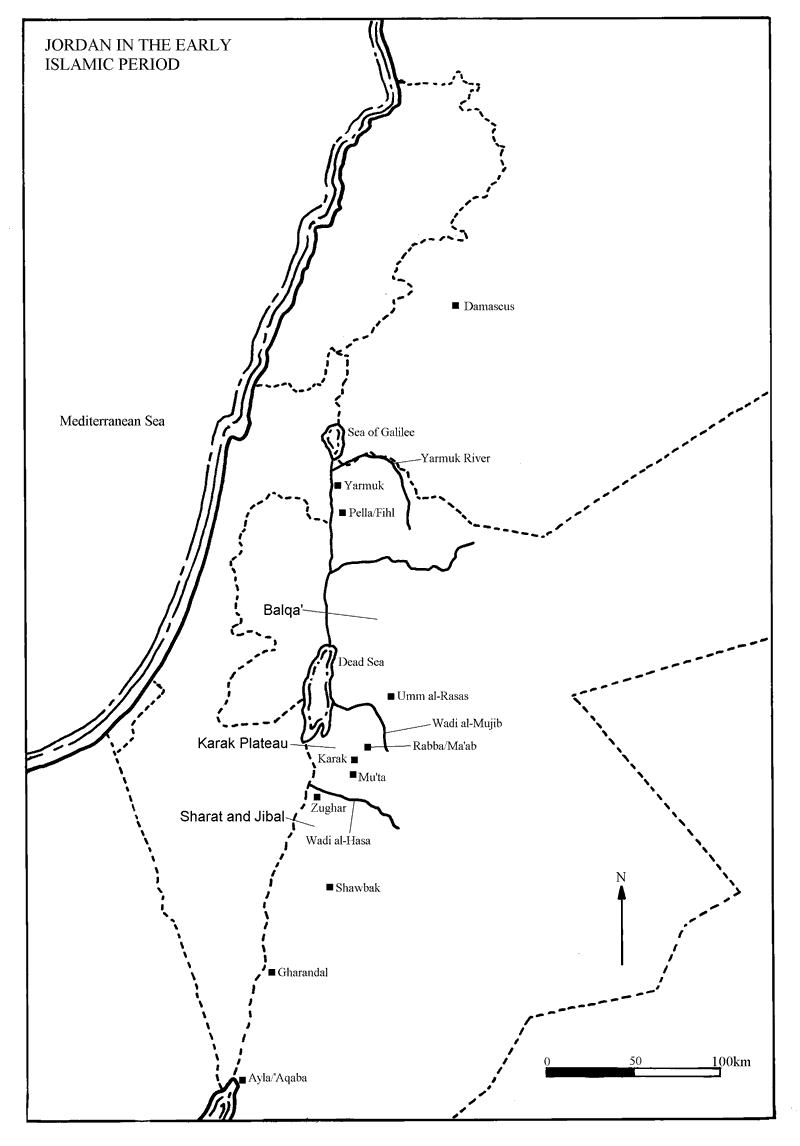The Karak Plateau in the Early Islamic Period (636-1116 C.E.)
Dr. Marcus Milwright
Note: Make yourself familiar with the names of places and regions on the map below before reading the text. For more detailed geographical and historical information, see the historical atlases and guides suggested in the bibliography. All dates are Common Era unless otherwise stated.
Introduction
The Early Islamic period on the Karak plateau (in Arabic, Ard al-Karak) covers a period from 636 (Hijra year 15) to 1116. The former date is that of the defeat of the Byzantine armies at Yarmūk in northern Jordan. The victory of the Arab forces under the leadership of Khālid ibn al-Walīd was the last of a series of battles and skirmishes between the two sides in the lands east of the Jordan valley and Dead Sea valley (an area now covered by modern Jordan). The latter date marks the construction of the castle of Montréal in southern Jordan (known in Arabic as Shawbak) by the Crusader king of Jerusalem, Baldwin I. Crusader forces had made previous incursions onto the Karak plateau and further south in 1100, 1106, and 1112-13, but it was only with the construction of Montréal, and later Karak castle (known in Crusader sources as Petra of the Desert or Crac de Montréal, and in Arabic as Hisn al-Karak) after 1142, that the Kingdom of Jerusalem gained complete control of the regions stretching from the Wādī Zarqā’ in the north to the Red Sea port of Ayla (`Aqaba) in the south. During the Early Islamic period the Karak plateau formed a small part of larger empires: first the Umayyads (650-750), then the Abbasids (750-c.950) and finally the Fatimids (in Jordan: c.975-c.1100). In the final years before the Crusader conquest the south of Jordan may have been under the control of a minor prince of Damascus called Zāhir al-Dīn. It is important to recognize, however, that for much of the Early Islamic period central government control on the Karak plateau and the regions south of the Wādī al-Mūjib appears to have been comparatively weak (or at times completely absent).
The historical development of the Karak plateau in the Early Islamic period is difficult to reconstruct with certainty. The main problem lies in the fact that few of the written sources of this time deal specifically with the Karak plateau and the remainder of southern Jordan. The Arab writers discussing Jordan in the period prior to the Crusades tend to be more concerned with the area north of the Wādī al- Mūjib, known as al-Balqā’. This bias reflects the fact that, in Jordan, it was al- Balqā’ that received the bulk of the architectural patronage under the Umayyad caliphs and later rulers. As a result, it is necessary to assemble the history from brief references mainly found in Arabic chronicles and geographical works of the period from the ninth to the fifteenth century. In addition, we have further evidence from a few standing monuments as well as the excavations and field surveys that have been carried out on the Karak Plateau and further south in Jordan.
